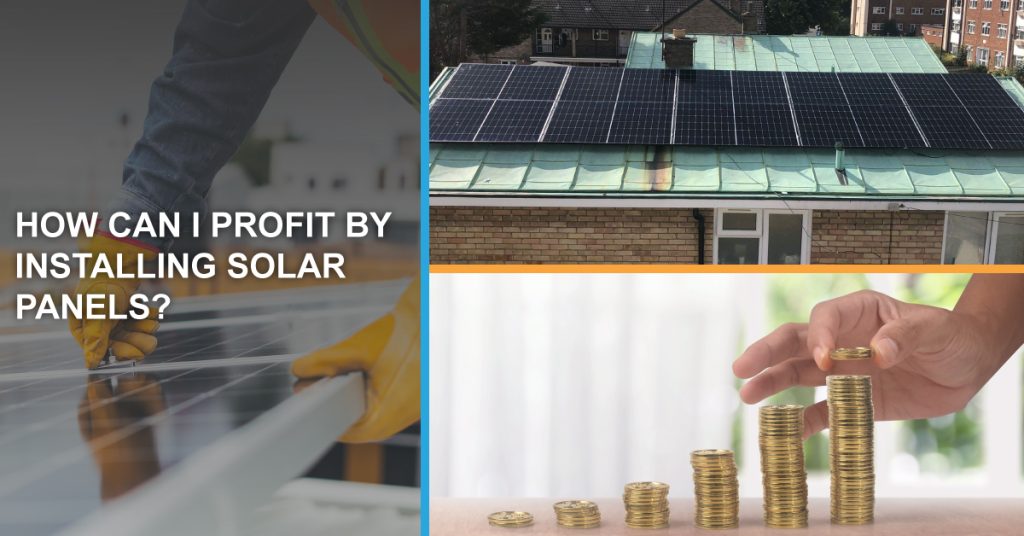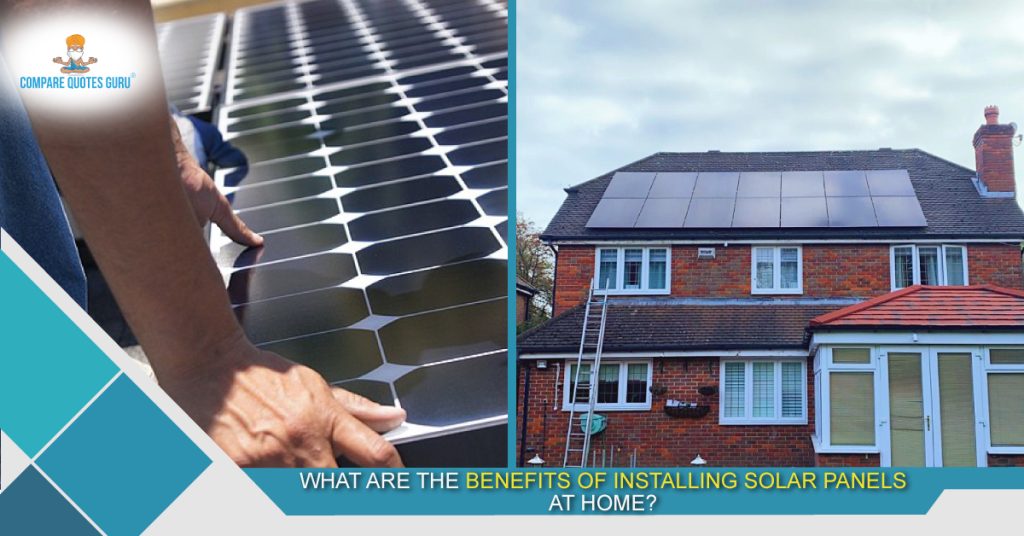Solar panels are an excellent way to minimise the home’s environmental impact and counteract overall energy expenses.
Even with price ceilings or subsidies, a lot of households are dealing with skyrocketing energy costs this winter. To help reduce costs, many people are mounting solar panels on their rooftops.
Individuals produce far more energy during the warm spring days than they consume and exchange that with the grid. They withdraw from the grid when the air conditioner is running during the hot summer months or when it is gloomy outside.
Due to increased work from home, many people are using more energy throughout the day. As a result, several homes are considering installing solar panels to reduce costs and possibly even make profit from the energy they produce.
Solar panels will continue to produce energy even in cloudy weather, although sunny days will provide more solar energy. Diffused or indirect sunlight will nonetheless contribute to illuminating your house. Approximately twenty per cent of the power generated during warm days is typically produced on cloudy days.
Types of Solar Panels
Generally speaking, if the weather and the solar panel types selected are precisely matched to one another, solar energy is not only a very cost-effective and economical energy source but also a truly dependable and long-lasting one.
a. Monocrystalline Panels: Solar panels built of monocrystalline silicon are the cleanest variety of solar panels. They have a uniformly dark appearance, and their edges are rounded, enabling them easy to identify. Due to the high purity of silicon, this type of solar panel has one of the greatest efficiencies.
b. Polycrystalline Panels: They have squares, their angles are not clipped, and they have a blue, speckled appearance, making them easy to identify. They are created by melting unprocessed silicon, which is a quicker and less expensive method than the monocrystalline panel manufacturing technique. Because they are more sensitive to hot temperatures, this results in a cheaper final cost but also reduced efficiency and a shortened lifespan.
c. Thin-Film Solar Cells: Consider thin-film if you are seeking a less costly choice. A substrate is covered with one or more photovoltaic films made of silicon, cadmium, or copper to create thin-film solar panels. They are also more resistant to high temperatures and flexible, which creates numerous options for different applications. They are often inappropriate for residential installations because they occupy a lot of space.
d. Bio hybrid Solar Cell: One sort of solar panel that is still in the development phase is the bio hybrid solar cell. Many of the materials used in this cell are identical to those used in conventional systems, but the combination of photosystem 1’s numerous layers makes the conversion of chemical energy to electrical energy significantly more efficient.
e. Concentrated PV Cell: Concentrated photovoltaic cells produce electricity in the same way as traditional solar systems. These multi-junction solar panel types have the highest efficiency rate of all existing photovoltaic systems at least around 41%.
How do Solar Panels Generate Electricity?
Solar power is a perfect renewable energy source since it is safe, dependable, and clean. With no emissions or environmental harm, it can be utilised to generate power or heat the water in your home. The simplest explanation of how solar panels generate electricity is that they absorb sunlight from the sun and use that energy to power your home.
The solar panels for the majority of solar systems are mounted on the rooftop. The rooftop placement should ideally be clear of any shade that could cover the panels. The best position for the system will typically be a south-facing installation, allowing it to maximise the amount of sunlight it receives.
Photovoltaic cells, which are frequently constructed of silicon, are found in solar panels. These convert the incoming solar energy into energy rather than heat.
A silicon sheet that is both positive and negative is positioned beneath a tiny piece of glass to form solar PV cells. The electrons on the silicon are blasted off as the photons from sunshine strike and enter these cells. The silicon cell’s one side is specifically drawn to the negatively charged free electrons, which generates an electric voltage that can be gathered and then distributed throughout the house.
A solar PV array sometimes referred to as a series of solar panels, is created by connecting the separate solar panels in order to gather the current.
The inverter is frequently attached to the external sidewall of the house next to the power major or sub-panels in residential applications. When choosing the site, it should be kept in mind that inverters generate a light noise.
Can Solar Panels be combined with other Renewable Systems?
Even on cloudy days, you will generate electricity during the day. However, if you need more electricity for your home’s requirements than your solar panels are producing or if it is late at night and your panels are not producing any electricity, you will import electricity from the main grid to compensate for the difference.
And obviously, Solar PV can be used in conjunction with other green technologies like heat pumps or solar hot water systems under such circumstances. These technologies complement one another well, for instance, solar PV could power a heat pump or a number of these systems might supply a thermal store.
But the size of the array and any challenges with accessing your roof will have an impact on the price you pay. If you already have equipment for a roofing system or if you are building a new home, some of the expenses can be split.
Whether you select panels or tiles, building-integrated panels or panels that rest on top of your roof will also have an impact on costs. We advise receiving quotations from different installers because costs might differ.
How can I profit by installing Solar Panels?

You can certainly profit through the latest solar panel technology which has undergone tremendous advancements in recent years. And the volume of panels manufactured has expanded dramatically as a result of rising global demand.
As a result, over the past few years, the price of installing solar panels has also decreased significantly in the UK.
The output of a solar panel is influenced by a number of factors, such as its size, capacity, location, and weather.
In the UK, batteries for storing solar energy are already widely available and one can easily profit by installing solar panels along with storage batteries.
Due to the fact that the technology is still in its development, these devices can be rather costly but just similar to solar panels, the price is steadily declining.
You can get reimbursed for the electricity you generate but don’t consume by registering your solar panels well with the government’s Feed-in Tariff.
It is still to your greatest profit to utilising a large portion of your electricity as you can, even if it means storing some in a battery and using it at night-time when this payment is restricted at fifty per cent.
ROI for existing homes increases according to the size of your solar panel installation. The initial cost of solar panels for household use might vary depending on the type of panel chosen like tiles or straight panels.
Since energy prices are expected to increase over the next few years, having your own supply could very well result in a higher return on investment and financial savings from which you can benefit.
Independent suppliers are becoming increasingly critical to the maintenance of the power provided to the National Grid, according to an increasing number of energy companies.
Get in touch with our expert installer if you have any queries about the performance of your solar panels or if you want to understand how they will assist you in saving money.

